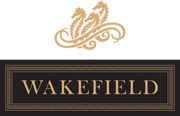Land and Biodiversity Management
Regeneration of the local Wakefield River
The Wakefield River flows in a southerly direction through Auburn in the Clare Valley before turning west to flow through Balaklava and into the Port Wakefield estuary. Seven kilometers of the Upper Wakefield River meanders through the Taylor family’s Clare Valley vineyard estate in Auburn, South Australia. Through the formation of the Upper Wakefield Catchment NRM Community Group, we continue to champion several restoration projects within the catchment through the control of weed species and the planting of local indigenous vegetation to enhance biodiversity.
Soil Health and Biodiversity
Since 2001, we’ve used organic matter to mulch the soil under the vines on our estate. This provides benefits such as superior root growth near the soil surface to utilise water and nutrients, enhanced earthworm and soil microbe activity for healthier soils and reduced weed growth (which lowers herbicide use). Materials used for mulching include straw from farmers in surrounding districts, grape marc, and recycled organic waste purchased from local third party suppliers. We have an ongoing commitment to assessing and managing site wide biodiversity on our property. A baseline biological survey was carried out in 2012, and this has provided the basis for our structured Biodiversity Action Plan.
Minimisation of Pesticides
We strictly follow the guidelines published annually by the AWRI, titled ‘Agrochemicals Registered for Use in Australian Viticulture’. Insecticide application in the vineyards is minimised at all times with no broad spectrum insecticides in use. Continuous vineyard monitoring ensures that targeted spraying only takes place in the worst affected areas. For all spraying activity - air temperature, relative humidity and wind speed are monitored regularly during any spraying operation.
Organic cultivation Practises – sheep in the vineyard
In 2009, we reintroduced sheep into our vineyards for the first time in 25 years. The sheep, which are allowed to roam free within specific vineyard blocks, have been introduced as a means to keep winter grasses and weeds under control. This has led to an immediate reduction in the requirements for herbicides to control weeds and associated diesel fuel to run the tractors for spraying and slashing. An associated benefit is also that the manure waste from the sheep is used as a natural fertiliser and soil conditioner for the vines. The reduction of frequency in tractor usage also lessens soil compaction between the rows, improving overall soil health and facilitating broader root spread.




